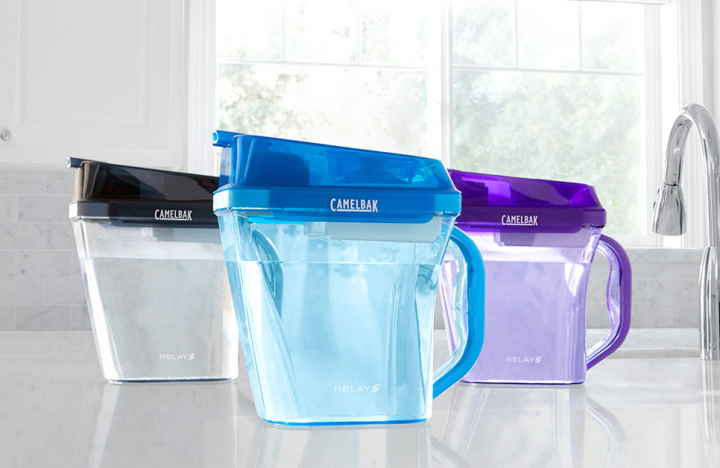
When you hear the name Camelbak, the first thing that pops into you head is probably hydration packs, water bottles, or maybe even the hump of a certain desert-faring mammal. In any case, the company definitely isn’t known as a purveyor of home goods, but it’s making moves to change all that, and possibly dethrone Brita as the king of water filters.
Earlier this week the company pulled the curtain back on a new product: the Relay filtration pitcher. Just like other products like it, Relay uses plant-based activated carbon filters, and promises to remove 97 percent of chlorine, taste, and odor from your tap water.
But being the innovative company it is, Camelbak didn’t just make any old filter pitcher — it tweaked the traditional design and incorporated some new features to make it better, faster, and easier to use. First and foremost, the Relay uses this oddly-shaped dual-pleated filter that, thanks to its large surface area, allows water to flow through ten times faster than most other filters. The pitcher also sports a special lid that locks into place, so there’s no risk of spilling anything, even if you forget the upper reservoir is full and try to pour yourself a drink.
Relay is currently available in three different colors, and sells for around $37. A three-pack of replacement filters will run you about $30, but each one is good for roughly four months, so it’s still a pretty good deal. Find out more here.




